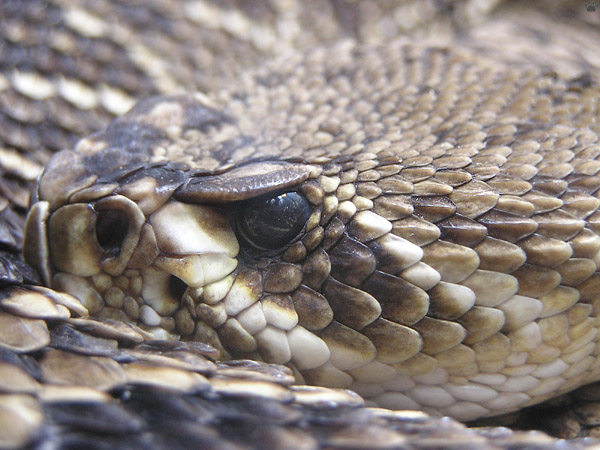
Eastern diamondback rattlesnake (Crotalus adamanteus), Ocala National Forest. |
Florida, part 17: Snakes
Florida Peninsula has almost forty species of snakes. Some are abundant, others rare and difficult to find. I've spent countless hours driving at night on remote roads, walking through forests, turning over logs and shifting through aquatic vegetation, but I still haven't seen many species.
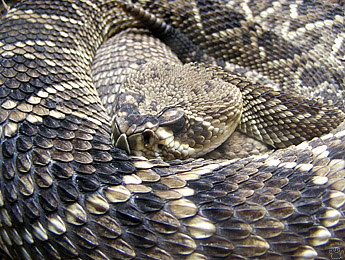 |
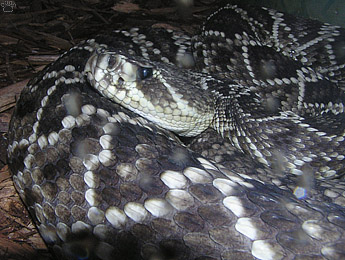 |
| Eastern diamondback rattlesnakes, ONF. |
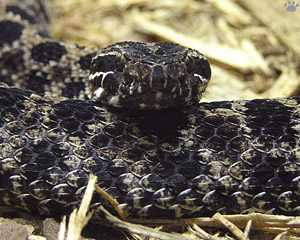
Dusky pygmy rattlesnake (Sisturus miliarius barbouri), ONF. |
Of the three pit viper species, eastern diamondback is the largest, pygmy rattlesnake the smallest, and cottonmouth the most common. |

Florida cottonmouth (Agkistrodon piscivorus conanti), OS. |
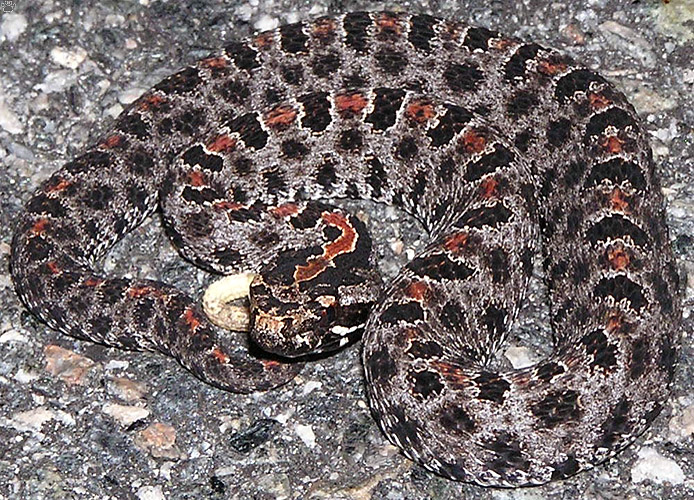
Dusky pygmy rattlesnake, Okeefenokee Swamp. |
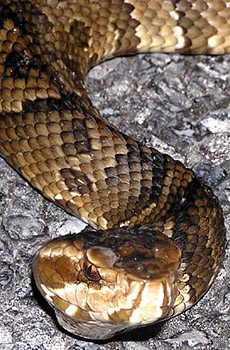
Florida cottonmouth, Everglades National Park. |
Both rattlesnakes prefer pinelands, sand scrub and other dry habitats, while the cottonmouth inhabits wetlands.
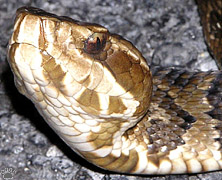
Florida cottonmouth, ENP.
In the Everglades, you can sometimes see 30-40 cottonmouths in one night of driving. |
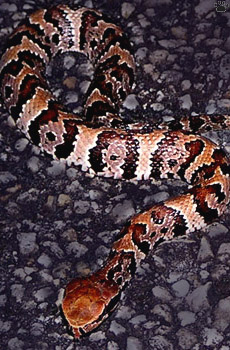
Florida cottonmouth, ENP. |
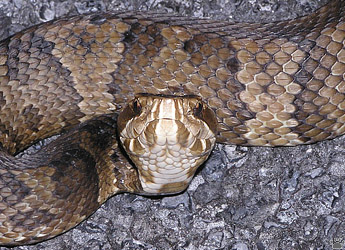 |
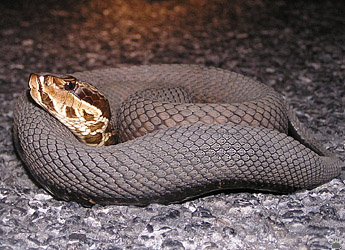 |
| Florida cottonmouths, ENP. |

Florida cottonmouth, Big Cypress National Preserve. |
This snake gets its name from the unusual mouth coloration, used in spectacular defensive display. It is highly venomous, but not aggressive. |
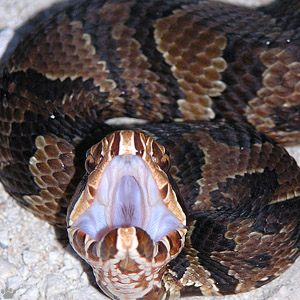
Florida cottonmouth, BCNP. |
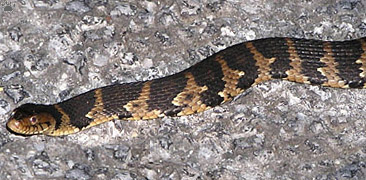 |
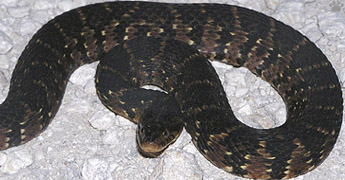 |
| Florida water snakes (Nerodia fasciata pictiventris), ENP. |
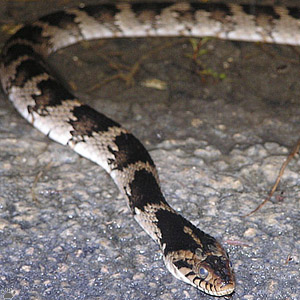
Florida water snake, BCNP. |
Water snakes, particularly Florida water snake, mimic the cottonmouth in coloration and behavior, but they don't have white mouths. They are also abundant in most wetlands. |
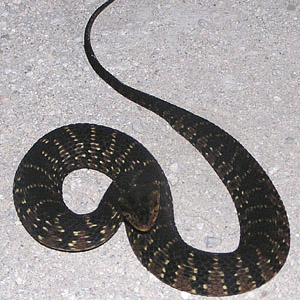
Florida water snake, ENP. |
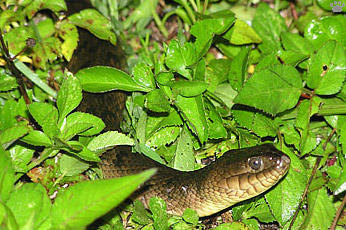
Florida green water snake (Nerodia floridana), ENP. |
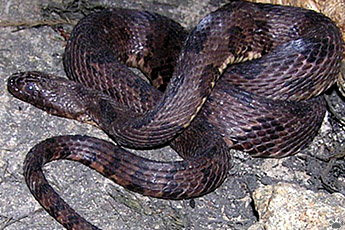
Brown water snake (N. taxispilota), ENP. |

Florida green water snake, Archbold Biological Station. |
Three species prefer fresh water, but salt marsh snake occurs in salt and brackish water along the coast, especially in mangroves. |
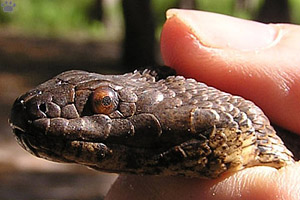
Brown water snake, ABS. |
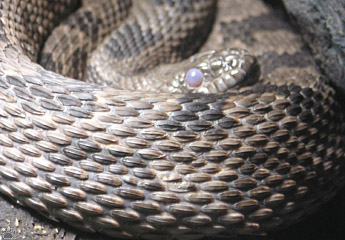
Brown water snake, OS. |
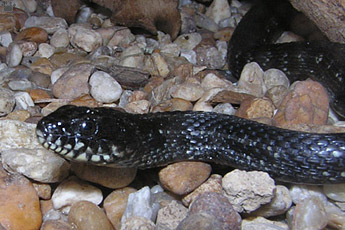
Mangrove salt marsh snake (N. clarkii compressicauda), ENP. |
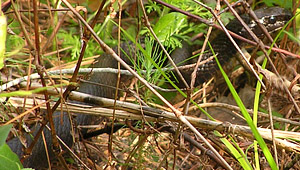
Everglades black racer (Coluber constrictor paludicola), BCNP. |
There are two subspecies of black racer in Florida, both very common, fast-moving diurnal snakes. |

Everglades black racer, ENP. |

Southern black racer (C. c. paludicola), ONF. |
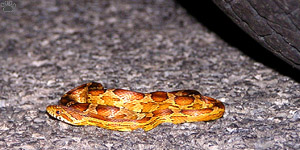
Corn snake (Elaphe guttata guttata) on a road, ENP. |
Like other Florida snakes, the colorful corn snake is often killed by cars while crossing roads. |
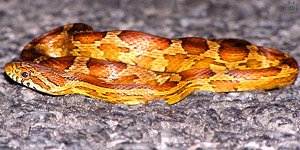
Corn snake, ENP. |
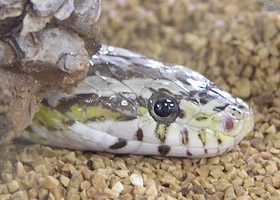
Corn snake, ABS. |
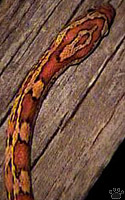
Corn snake, ENP. |
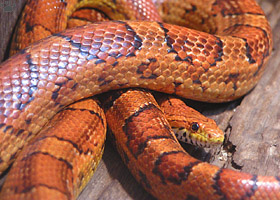
Corn snake, ONF. |
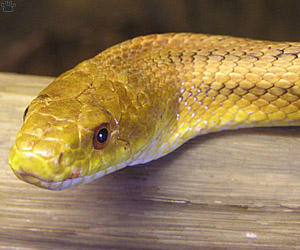
Yellow rat snake (E. obsoleta quadrivittata), ABS. |
Both corn and rat snakes are excellent tree climbers and swimmers. They have colonized almost every natural habitat, and often live in abandoned houses. |
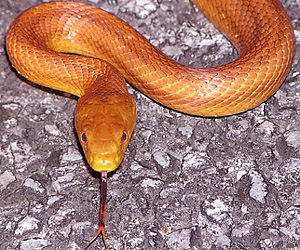
Everglades rat snake (E. o. rossalleni), ABS. |
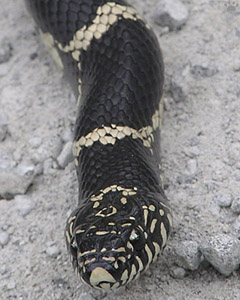
Eastern kingsnake (Lampropeltis getula getula), ONF. |
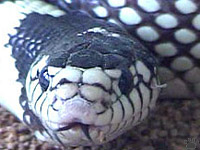
Eastern kingsnake, ONF.
Kingsnakes are snake killers. They are immune to rattlesnake and cottonmouth venom, but mostly feed on water snakes, snake and turtle eggs, and other small prey. |
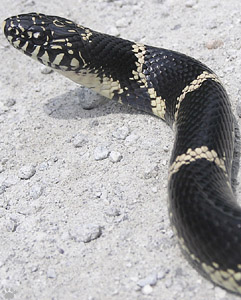
Eastern kingsnake, ONF. |

Eastern kingsnakes mating, ONF. |

Florida kingsnake (L. g. floridana), ENP. |
The two Florida subspecies of eastern kingsnake intergrade over much of the peninsula. |
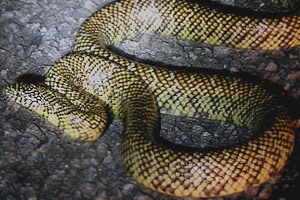
Florida kingsnake, ENP. |
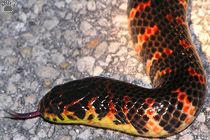 |
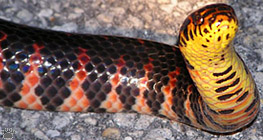 |
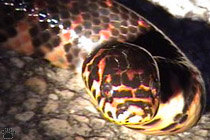 |
| Eastern mud snake (Farancia abacura abacura), ENP. |
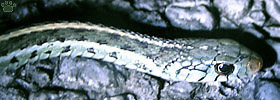
Eastern garter snake (Thamnophis sirtalis sirtalis),
Osceola National Forest. |
There are many other aquatic snakes in Florida, but only one truly arboreal species - the rough green snake. |
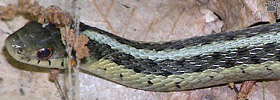
Eastern garter snake, Arthur R. Marshall Loxahatchee
National Wildlife Refuge. |
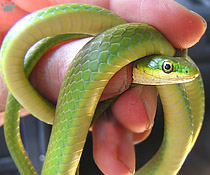 |
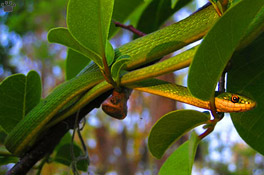 |
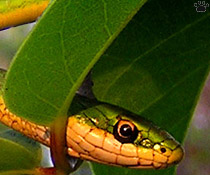 |
| Rough green snake (Opheodrys aestivus), left - Guana River Wildlife Management Area, center and right - ARMLNWR. |
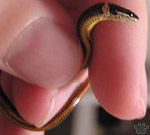
Southern ringneck snake (Diadophis punctatus punctatus), Coral Gables. |
The tiny southern ring- necked snake occurs all over Florida, even in cities. |
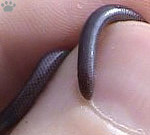
Brahminy blind snake (Ramphotyphlops braminus), CG. |
But it's not the smallest snake here: the introduced Brahminy blind snake is even smaller. |
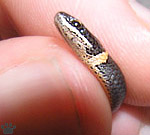
Southern ringneck snake, caught
at my doorstep, CG. |
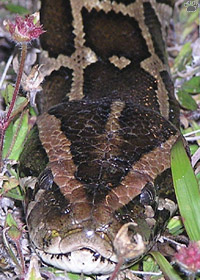
Burmese python, ENP. |

Burmese python (Python molurus bivittatus) , ENP.
Florida's largest snake is the introduced Burmese python - it grows to 8 m/27 feet. |
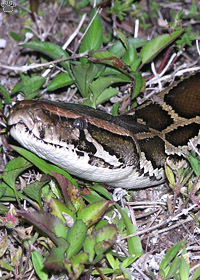
Burmese python, ENP. |

Young Burmese python, ENP. |
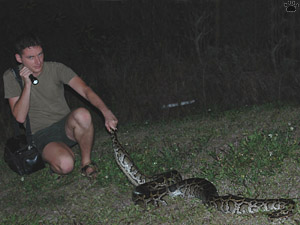
Burmese python, ENP. |
This snake is rapidly becoming a serious threat to the native wildlife of the Everglades. It can also be dangerous to small children. |

Burmese python, ENP. |
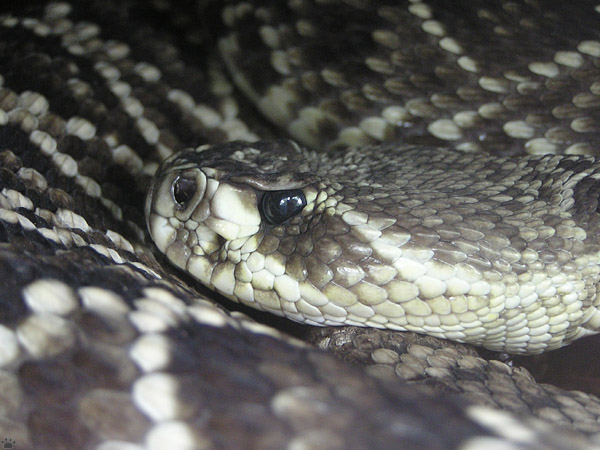
Eastern diamondback rattlesnake, ONF. |
Part 18. Lizards
Back to Part 16
Home
|
























































